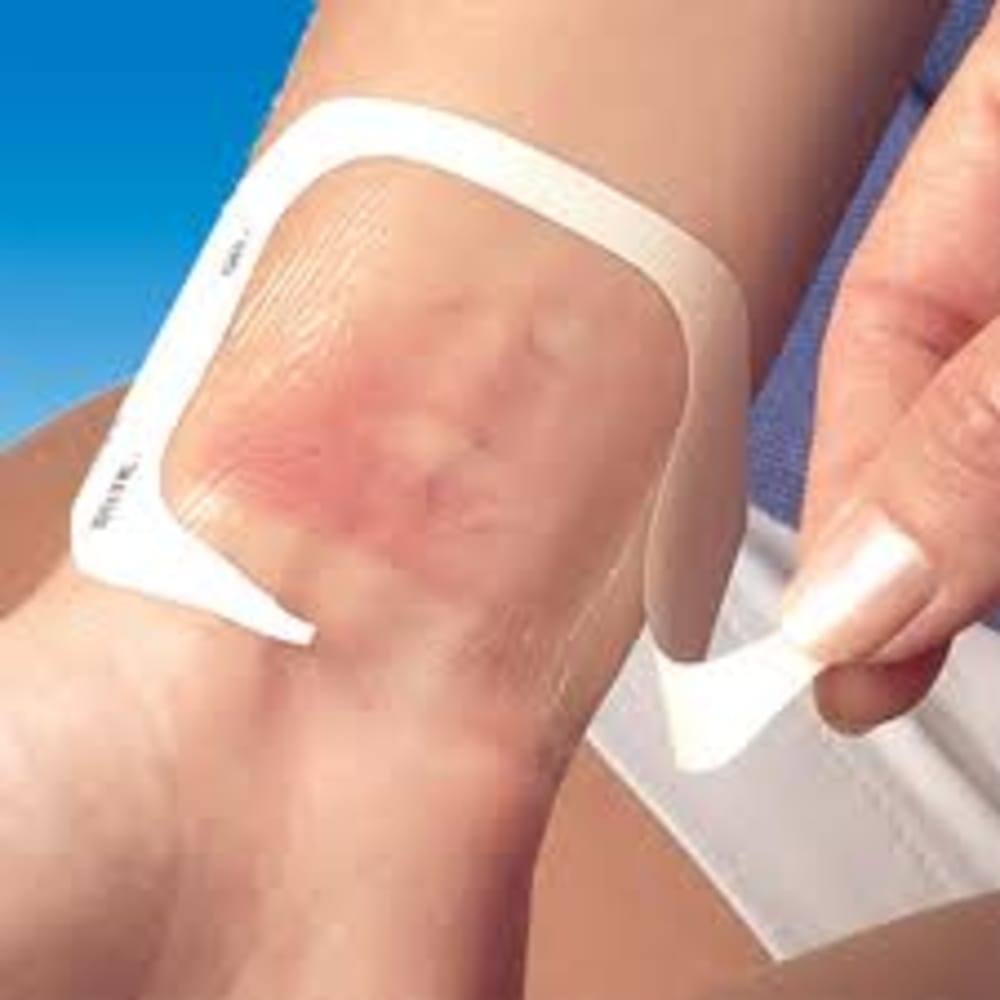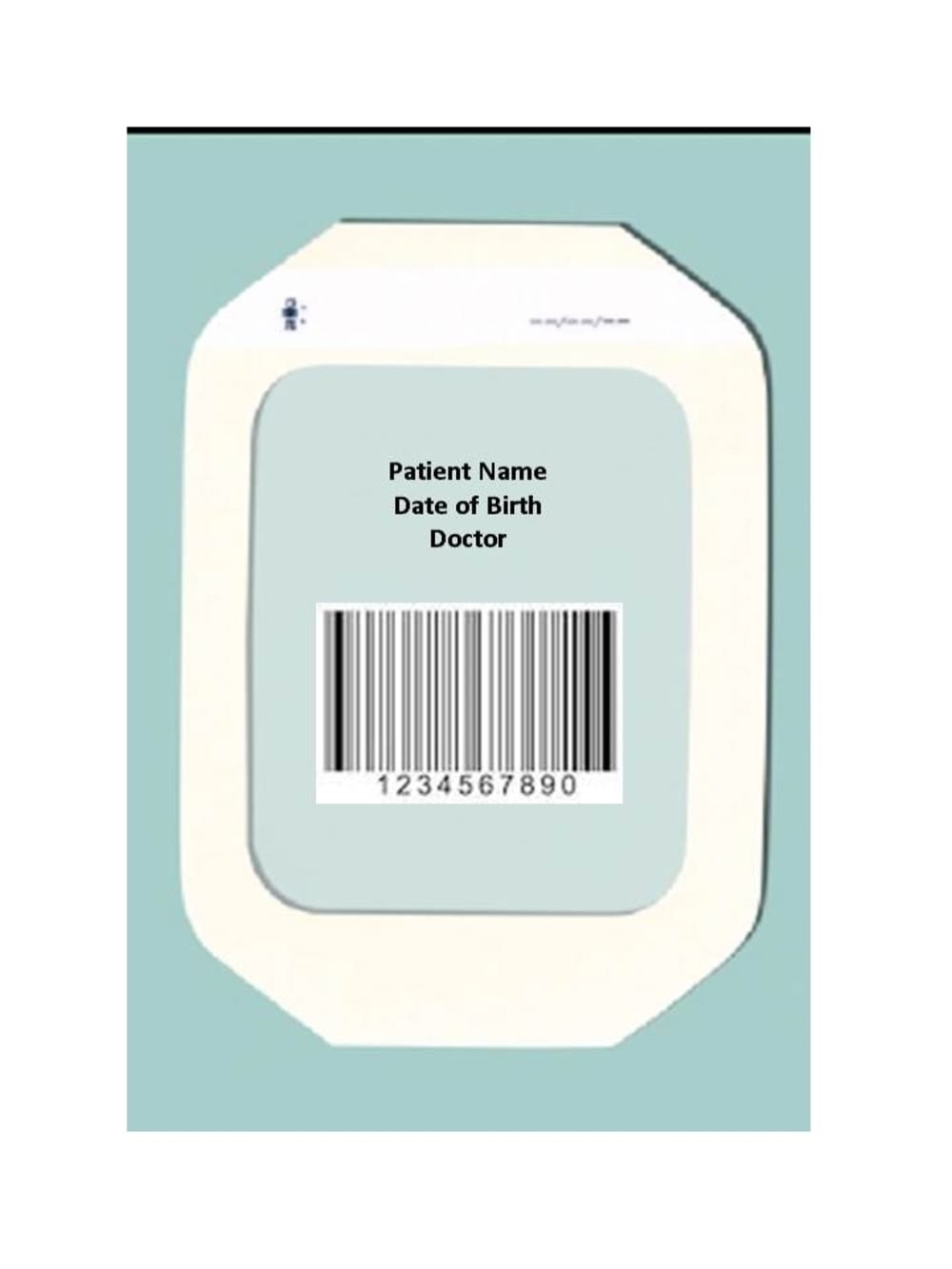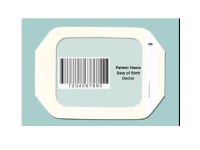A polymeric film which can be transparent, semi-transparent or opaque, that consists of the polymeric film and a backing of some sort that adheres to the skin of the patient, but can be easily removed to reposition and re-adhered if necessary. The film, contains patient identification, including currently available information (name, date of birth, doctor, etc.), a barcode or other scanner-readable markings that are permanent in nature, which contain the patient information, but due to its encrypted nature through the use of a barcode or other, maintains the patient’s confidentiality.
The film, which can also be known as a dressing, is an adjunct used by a person for application to a wound to promote healing and/or prevent further harm. A dressing is designed to be in direct contact with the wound, which makes it different from a bandage, which is primarily used to hold a dressing in place. In the application, this is a different and novel use of a transparent dressing.
A barcode or other markings scanner is utilized to read the patient information on the identifying patch. These scanners are available commercially and can be interfaced with and to the electronic medical records accessed through a hospital, doctor’s office or other medical facility, including a mobile transportation unit such as an ambulance.
Current identification systems include many solutions, which typically consist of a printed label system affixed to a bracelet in some fashion. There are many systems that are variations of the same basic type of identification. As a bracelet, it is affixed at the wrist and presents a hindrance to patient care when the region of the wrist needs to be accessed by medical personnel for the purpose of affixing an IV, etc. In many cases, the bracelet is removed by cutting, to allow for access to the patient’s wrist. The bracelet may also restrict blood flow if the patients’ extremities become distended or edematous. Once removed, the current identification system fails in its purpose. The patient information is often handwritten on the bracelet after it has been printed and affixed. This can lead to errors of many types. Bracelets may not be fully waterproof and therefore information on the bracelet may fade or can be removed through repeated abrasions over time.
Like this entry?
-
About the Entrant
- Name:Marc Hirsch
- Type of entry:teamTeam members:Maria T. Hirsch, Marc S. Hirsch
- Patent status:pending








